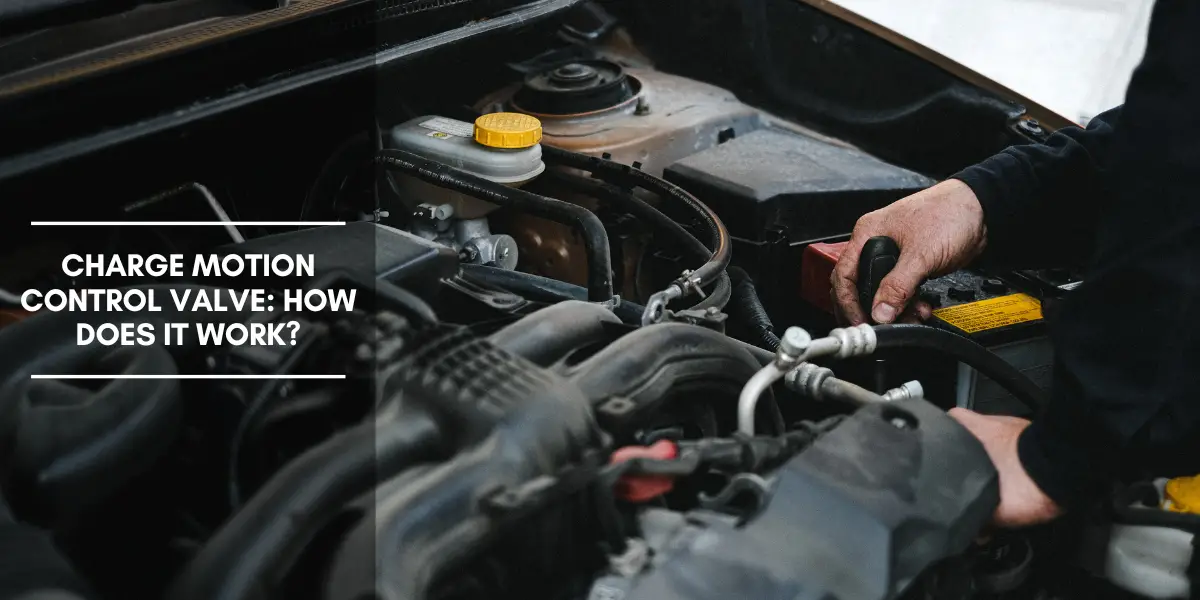Charge motion control valves (CMCV) play a critical role in the modern internal combustion engine’s performance and efficiency. In this article, we’ll dive into the details of the CMCV, how it works, and its significance in improving engine performance.
If you’re curious about the science behind this incredible automotive innovation, look no further.
In short, the CMCV regulates the air intake in the engine, optimizing combustion and emissions. This valve is responsible for controlling the charge motion, affecting the combustion process and engine output.
Continue reading to learn more about the charge motion control valve, its components, operation, and benefits, as well as some common issues and maintenance tips.
What is a Charge Motion Control Valve?
Components and Function
A charge motion control valve is an electronically controlled valve responsible for adjusting the airflow into the combustion chamber. By controlling the air intake, the CMCV can optimize the combustion process, improving engine performance, efficiency, and reducing emissions. The primary components of a CMCV include:
- The valve body: A housing that encloses the moving parts of the valve.
- The butterfly valve: A rotating disc that modulates the airflow.
- The actuator: An electronic device that controls the butterfly valve’s position.
Charge Motion Control in Action
When the engine is operating at low speeds or loads, the CMCV partially closes the butterfly valve, creating a swirling motion in the air-fuel mixture.
This swirling motion, also known as tumble, improves combustion by promoting a more thorough mixing of the air and fuel. As a result, the engine operates more efficiently and produces fewer emissions.
At higher speeds or loads, the CMCV opens the butterfly valve, allowing more air to flow into the combustion chamber. This increased airflow, known as charge motion, enables the engine to produce more power while still maintaining efficiency.
Benefits of Charge Motion Control Valves
Improved Fuel Efficiency
One of the primary advantages of a CMCV is its ability to improve fuel efficiency. By optimizing the combustion process, the engine can extract more energy from the fuel, reducing consumption and saving drivers money at the pump.
Reduced Emissions
Another significant benefit of the CMCV is its role in reducing harmful emissions. By controlling the air-fuel mixture and promoting more efficient combustion, the engine produces fewer pollutants, making it more environmentally friendly.
Enhanced Engine Performance
Charge motion control valves also contribute to enhanced engine performance. By adjusting the airflow based on engine speed and load, the CMCV ensures the engine produces the optimal amount of power for any given driving situation.
Common Issues and Maintenance Tips
Signs of a Failing CMCV
While charge motion control valves are generally reliable, they can experience issues over time. Some common signs of a failing CMCV include:
- Poor engine performance
- Reduced fuel efficiency
- Check engine light
If you experience any of these symptoms, it’s essential to have your vehicle inspected by a professional to determine if the CMCV needs to be replaced.
Maintenance and Replacement
Routine maintenance is crucial for ensuring the longevity of your CMCV. Regularly inspecting and cleaning the valve body, butterfly valve, and actuator can help prevent issues before they become significant problems.
Additionally, following your vehicle manufacturer’s recommended service intervals can help ensure your engine and its components, including the CMCV, remain in good working order.
Conclusion
The charge motion control valve is an essential component of modern internal combustion engines, playing a vital role in optimizing performance, efficiency, and emissions.
Understanding how the CMCV works, as well as its benefits and common issues, can help you maintain your vehicle more effectively and ensure it operates at its best.
Now that you have a better understanding of the charge motion control valve and its role in improving engine performance and efficiency, you can appreciate the innovative engineering that goes into modern internal combustion engines. Keep an eye on your CMCV and perform regular maintenance to ensure your engine continues to run smoothly and efficiently.
FAQs
- What is the primary function of a charge motion control valve? The primary function of a charge motion control valve is to adjust the airflow into the combustion chamber, optimizing the combustion process for improved engine performance, efficiency, and reduced emissions.
- How does a CMCV contribute to improved fuel efficiency? A CMCV improves fuel efficiency by controlling the air-fuel mixture in the combustion chamber, promoting more thorough mixing and more efficient combustion. This process enables the engine to extract more energy from the fuel, reducing consumption.
- Can a faulty CMCV cause a check engine light? Yes, a faulty CMCV can cause the check engine light to illuminate. If you notice this light on your dashboard, it’s essential to have your vehicle inspected by a professional to determine the cause and address any issues.
- How often should I inspect and clean my CMCV? Inspecting and cleaning your CMCV should be part of your regular vehicle maintenance routine. Follow your vehicle manufacturer’s recommended service intervals to ensure your engine and its components, including the CMCV, remain in good working order.
- Can a failing CMCV impact my vehicle’s emissions? Yes, a failing CMCV can negatively impact your vehicle’s emissions. If the valve is not functioning correctly, it may not optimize the combustion process, resulting in increased pollutant emissions.


